A Bahá'í Perspective on Development
Growing up in Goma, located in the eastern part of the Democratic Republic of the Congo (DRC), I experienced firsthand the challenges of living in a developing nation. My childhood memories include journeys to Bukavu, about 200 km away, to visit my mother’s family. We often crossed Lake Kivu, rather than driving, due to the treacherous road conditions.
Patrick Bahati Ndeze
12/26/20236 min read
The Bahá’í Approach to Spiritual and Material Development
My recent journey spurred profound reflections about the Bahá’í community’s contributions to the development of the DRC. April 2022 marked the beginning of a new series of Plans that will last the following 25 years, in which the Bahá’í community has pivoted its focus towards a singular aim: “the release of the society-building power of the Faith in ever-greater measures”.[1] To this end, the Universal House of Justice exhorted us to learn how to raise up vibrant and outward-looking communities; communities that are learning how to bring about spiritual and material progress; communities that are learning how to contribute to the prevalent discourses in society.[2] Furthermore, the Universal House of Justice mentioned that we can spot glimpses of the society-building power of the Faith in places where the activities of the Plan are reaching a degree of prevalence, and in which the institutions are developing an expanded vision of their responsibilities.[3] In these places, residents are inspired by the teachings of Bahá’u’lláh to improve the spiritual character and the social conditions of their communities.[4]
An example of this is the village of Canjavu in the South-Kivu region of the DRC. Here, villagers are taking charge of their own spiritual and material development. They are maintaining their roads. They have established a community school thereby significantly decreasing the distance children have to travel to attend school in far off villages. Adults are involved in the Institute process and participate in the Preparation for Social Action (PSA) courses, which support them to establish activities such as community agricultural plots. They have established a health clinic responding to the immediate healthcare needs arising in the village. The administrative structures of the village, together with the Local Spiritual Assembly are thinking about the well-being of the whole village.
It is essential to underscore that the idea of a society taking care of its own development is not the norm in the DRC. Typically, we have a tendency to externalize blame for societal challenges, often pointing fingers at the government or lingering colonial legacies—despite over six decades of independence. This mindset starkly contrasts with the Bahá’í ethos of development, as exemplified in Canjavu. I find resonance with David Landes’s sentiment, “[b]y fostering a morbid propensity to find fault with everyone but oneself, [we] promote economic impotence. Even if they were true, it would be better to stow them.”[5]
During my challenging trip from Kananga to Mbujimayi, the processes unfolding in Canjavu offered a beacon of hope. I envisioned the village’s progress scaling up to encompass entire clusters or regions by 2046. Hence, we are exploring with Regional Bahá’í Councils how they can learn systematically about activities of social action and discourses that are taking place in clusters under their jurisdiction instead of focusing solely on expansion and consolidation. In this regard, the whole Bahá’í community and its Institutions are challenged to learn “how different actions look when viewed in light of the society-building power of the Faith they release!” [6] And how they can see a sustained activity more than an isolated act of service or just a data point. And perhaps, a quarter-century from now, individuals like Josline won’t face such challenging travel conditions in the DRC.
Not all 200 km journeys are the same: Understanding Development through Personal Experience and the Bahá’í Perspective
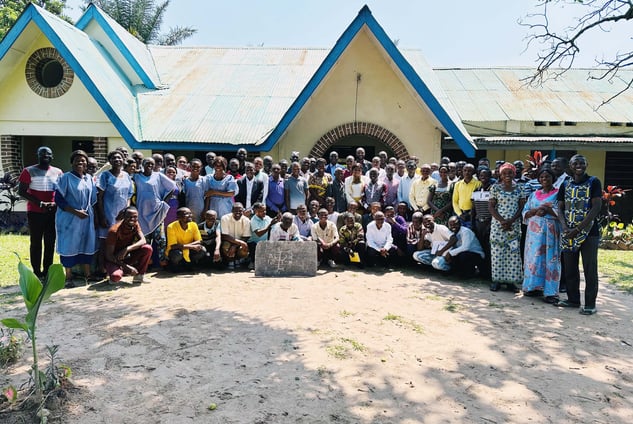

Growing up in Goma, located in the eastern part of the Democratic Republic of the Congo (DRC), I experienced firsthand the challenges of living in a developing nation. My childhood memories include journeys to Bukavu, about 200 km away, to visit my mother’s family. We often crossed Lake Kivu, rather than driving, due to the treacherous road conditions. Today, such a journey can take as little as three hours by speed boat. Yet, when I was around 12 or 13 years old, a car ride with my cousin from Bukavu to Goma took us over nine hours.
Decades later, I cycled from Haifa to Tiberius and around the Sea of Galilee (a 200 km distance) in about eight hours. This realization struck me hard: despite traveling the same distance, my bike journey on well-paved roads was quicker than car journeys on the rough roads of my homeland. For the first time, during this cycling journey, I became conscious of what it meant to live in a developing nation. Such treacherous road conditions are the reality in the DRC. Indeed, seasonal factors can make a truck journey of 200 km last up to a week.
*Participants at a Statistics Seminar in Western Kasai (DRC) in 2023
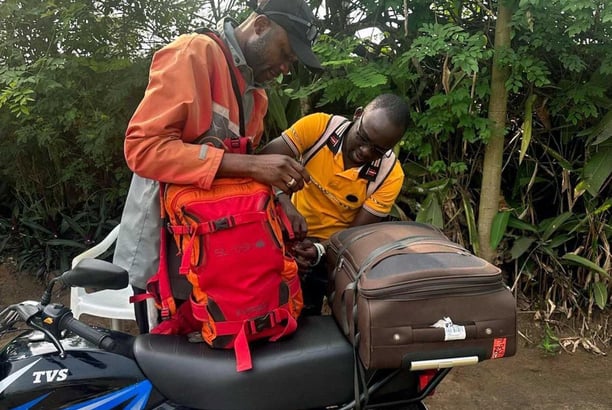

* Preparing Luggage for the Kananga–Mbujimayi Journey
The road to Mbujimayi was marked by uneven surfaces and stretches of sand. Remarkably, my watch logged 25,000 steps, mistaking the journey’s roughness for walking. Around 15 km into our journey, we encountered another motorcycle transporting four individuals. Most striking was a young girl, approximately 12 or 13 years old, perched on the fuel tank. Her name was Josline. Her older sister sat sandwiched between the driver and another passenger. Traveling under such conditions for eight hours was not only grueling but perilous. I couldn’t help but draw parallels between Josline and some of my nieces of a similar age, and long for a better option for her travels. When I enquired if she felt scared being positioned at the front, a fellow passenger responded, explaining their lack of alternatives. The reality is, many cannot afford to rent a motorcycle, prompting drivers to carry as many passengers as possible to maximize profits.
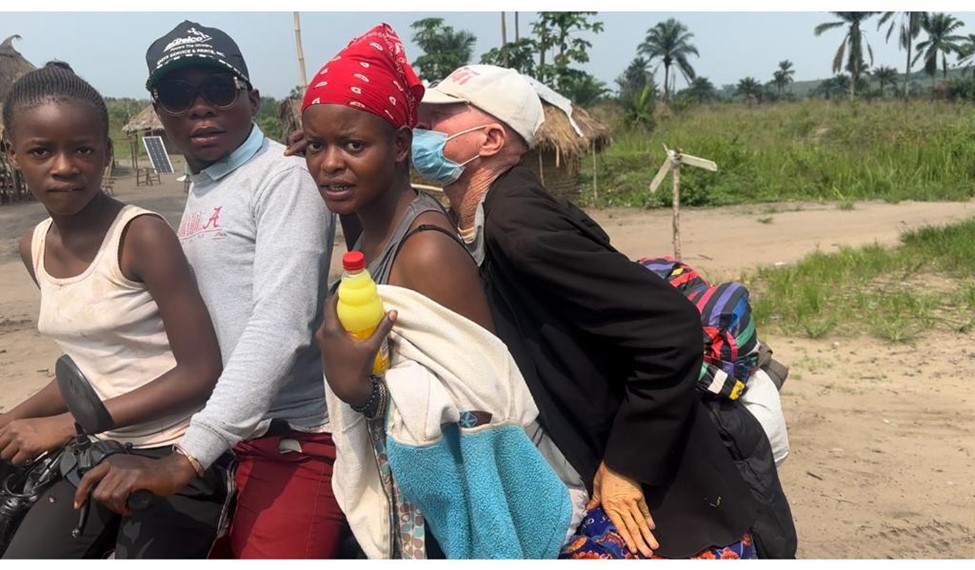

My most poignant regret was leaving Joseline behind at that checkpoint. However, fortune presented a second opportunity. Roughly 75 km later, while our drivers took a meal break, Josline and her companions caught up. We invited Josline to join us on our motorcycles, though I had to persuade and reassure her older sister of Josline’s safety with us. I emphasized the risks Josline was exposed to sitting on the fuel tank and guaranteed that they would reunite at the Bahá’í Center in Mbujimayi. The only hindrance was my driver’s demand for additional payment, which I promptly settled.
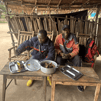

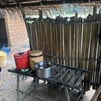

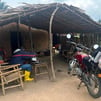



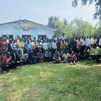
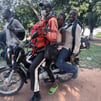



Throughout the trip, Josline’s unwavering resilience deeply moved me. The driver navigated potholes and sandy patches with the ease one might traverse smooth asphalt—despite the horror of his passengers. Anytime there was a swerve or shift, zigs and zags, he was quick to fault Josline for not maintaining her posture. Yet, she bore it all without uttering a word of complaint. When his persistent blame against Josline became unbearable for me, I requested we switch to another motorcycle, piloted by a Bahá’í friend. We eventually made it to Mbujimayi after 8 hours on the motorcycles. We were physically exhausted by the ordeal, but grateful to have arrived intact.




*Arrival at Mbujimayi Bahá’í Centre
*Participants at a Statistics Seminar in Eastern Kasai (DRC)
[1] Universal House of Justice, To the Conference of the Continental Boards of Counsellors, 30 December 2021, para. 3
[2] Id., at para. 2
[3] Id., at para 14
[4] Id., at para 17
[5] David Landes, The Wealth and Poverty of Nations: Why Some Are Rich and Some Are Poor, 6184 (1999)
[6] Universal House of Justice, Ridvan 2023 at para 6
In my current role as a resource person for statistics in Central Africa, I have been traveling across the region (the DRC, Chad, the Central African Republic (CAR), Congo Republic, Gabon, and Rwanda) to conduct seminars aimed at building institutional capacity to collect and utilize statistics to assist with planning at the cluster level. In September 2023, our team of three—including myself, the National statistics officer of the DRC, and a friend from the CAR who is helping with cluster mapping in the DRC—traveled to Kananga in Western Kasai, DRC. After Kananga, our next stop was Mbujimayi in Eastern Kasai.
Traveling the 200 km distance between Kananga and Mbujimayi proved challenging. There were no flight options at this time, though it used to take only 15 minutes to fly. Our remaining options were limited: either a potentially unsuccessful car ride or an eight-hour motorcycle journey. We chose the latter. We hired three motorcycles, each with a driver, to take us and our luggage to Mbujimayi
* Motorcycle Travelers Between Kananga and Mbujimayi
*Rest Stops on the Route
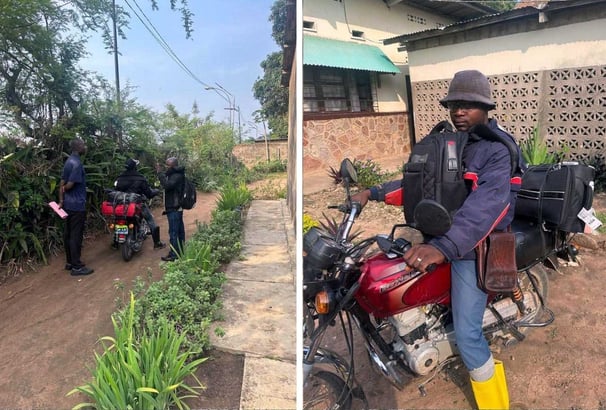

Contacts
patrick@bahatindeze.info
+243 990 653 517
Socials
Subscribe to our newsletter
Designed by Africonsnet-Afriwriters
